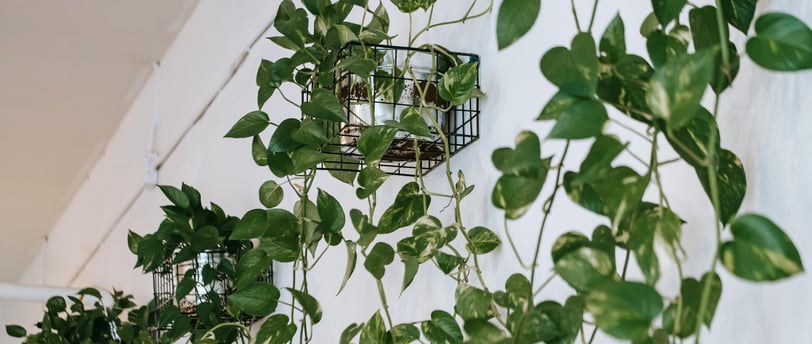Pothos Plant Care: A Guide to Thriving Indoor Pothos Plants
The Pothos plant is a fantastic choice for those looking for a low-maintenance, air-purifying indoor plant that adds style and greenery to any room. With minimal care, your pothos can grow into a lush, vibrant plant that will thrive for years. Ready to add a pothos plant to your indoor garden?
BeginnerPlants
11/5/20242 min read


Introduction
The pothos plant, often called “devil’s ivy,” is beloved by indoor gardeners for its easy care, air-purifying qualities, and stunning trailing vines. Known for its resilience, this low-maintenance plant thrives even in low light, making it ideal for any indoor environment, especially home offices. Here’s everything you need to know to keep your pothos healthy and vibrant.
What Makes Pothos the Perfect Indoor Plant?
Pothos plants are perfect for indoor spaces, thanks to their adaptability to low light and minimal water needs. Whether you’re a seasoned gardener or a beginner, a pothos plant adds a touch of green to any room without much hassle.
1. Types of Pothos Plants
1. Golden Pothos – Known for its iconic yellow and green variegated leaves.
2. Marble Queen Pothos – Features creamy white and green marbled foliage.
3. Jade Pothos – A solid green variety perfect for low light.
4. Neon Pothos – Bright lime green leaves that add vibrancy to any space.
Each variety has unique light and water needs but generally thrives under similar conditions.
2. Pothos Plant Care: Essential Tips
Light Requirements
Pothos plants prefer bright, indirect sunlight but can adapt to low-light settings. Direct sunlight may scorch the leaves, so consider placing it in a spot with filtered light, such as near a window with a sheer curtain.
Watering Schedule
Pothos plants are drought-tolerant. Water only when the top inch of the soil is dry to the touch. Avoid overwatering, as this can lead to root rot. In winter, reduce watering to every two to three weeks.
Humidity and Temperature
Pothos thrive in moderate to high humidity. If your indoor air is dry, consider using a humidifier or placing a tray of water near the plant. Ideal temperatures range between 65-85°F (18-29°C).
Soil and Fertilizer
Use a well-draining potting mix. Adding perlite to standard potting soil can improve drainage. Fertilize your pothos every 2-3 months with a balanced, water-soluble fertilizer during the growing season (spring and summer).
3. Common Pothos Problems and Solutions
1. Yellowing Leaves
• Cause: Overwatering or inadequate light.
• Solution: Allow the soil to dry out between waterings and move the plant to a brighter spot.
2. Brown Leaf Tips
• Cause: Low humidity or inconsistent watering.
• Solution: Increase humidity or adjust your watering schedule.
3. Leggy Growth
• Cause: Insufficient light.
• Solution: Relocate to a brighter spot or add a grow light.
4. How to Propagate Pothos Plants
Propagating pothos is a simple way to create new plants from cuttings:
1. Cut a 4-6 inch section of stem with at least four leaves.
2. Place the cutting in water and wait 2-4 weeks for roots to develop.
3. Once roots are 2-3 inches long, transfer the cutting to a pot with soil.
5. Decor Tips: Displaying Your Pothos Plant
Pothos plants look great in hanging baskets or on shelves where their vines can cascade. For a modern, minimalist look, place a pothos in a white or neutral-toned pot on your desk. They add a touch of green and improve air quality, making them perfect for a workspace.
Frequently Asked Questions About Pothos Plants
Q: How often should I water my pothos plant?
A: Water once the top inch of soil is dry; typically, once a week in warmer months and every 2-3 weeks in winter.
Q: Can pothos grow in low light?
A: Yes! Pothos are highly adaptable and can grow in low-light areas, though they may not grow as quickly as they would in brighter light.
Q: Are pothos plants toxic?
A: Yes, pothos plants are toxic to pets if ingested, so keep them out of reach of cats and dogs.
BeginnerPlants
Your guide to indoor and outdoor plant care.
© 2024. All rights reserved.
